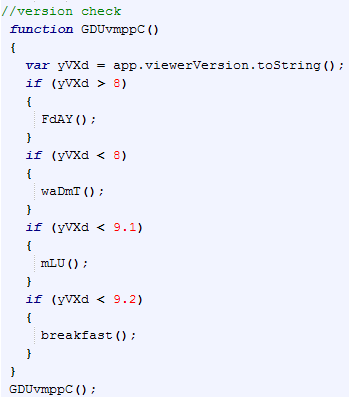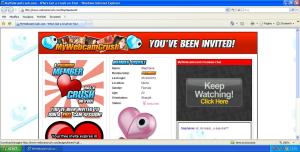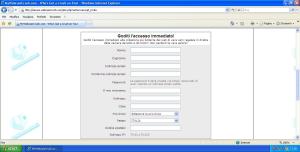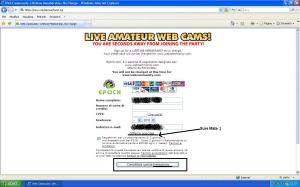Strong ARM (SA1110) Opcodes
Command Hex Example
--------------------------------------------------------------------------------------------------------
B xxxxxxEA branch
BEQ xxxxxx0A b if zero (Z)
BNE xxxxxx1A b if not equal (-Z)
BGE xxxxxxAA b if greater or equal (N*V/-N*-V)
BHI xxxxxx8A b if higher (-C*-Z)
BLT xxxxxxBA b if less than (N*-V/-N*V)
BCC xxxxxx3A b if carry clear
BCS xxxxxx2A b if carry set
BVC .
BVS .
BPL xxxxxx5A
BMI xxxxxx4A b if negative, set N
BHS .
BLO .
BLS xxxxxx9A b if lower or same (C/Z)
BGT xxxxxxCA b if greater than (N*V*-Z/-N*-V*-Z)
BLE xxxxxxDA b if less or equal (Z/N*-V/-N*V)
00022714 B loc_22734 06 00 00 EA
000226B8 BLE loc_226E4 09 00 00 DA
--------------------------------------------------------------------------------------------------------
BL xxxx00EB
BLEQ xxxx000B
--------------------------------------------------------------------------------------------------------
MOV (reg,value) xxxxA0E3 Mov R1,#0 0010A0E3
Mov R0,#1 0100A0E3
MOVEQ (reg,value) xxxxA003 Moveq R5, #0 0050A003
MOVNE (reg,value) xxxxA013
MOVGE (reg,value) xxxxA0A3
MOVHI (reg,value) xxxxA083
7F 0C A0 E3 MOV R0, #0x7F00
27 3B A0 E3 MOV R3, #0x9C00
value = erste 2 bytes * mX (x = Byte 4)
m1 := $40000000;
m2 := $10000000;
m3 := $4000000;
m4 := $1000000;
m5 := $400000;
m6 := $100000;
m7 := $40000;
m8 := $10000;
m9 := $4000;
mA := $1000;
mB := $400;
mC := $100;
mD := $40;
mE := $10;
mF := $4;
--------------------------------------------------------------------------------------------------------
MOV (reg,reg) xxxxA0E1 Mov R4,R0 0040A0E1
Mov R7,R1 0170A0E1
MOVEQ (reg,reg) xxxxA001
MOVNE (reg,reg) xxxxA011
00 38 A0 E1 MOV R3, R0,LSL#16
23 38 A0 E1 MOV R3, R3,LSR#16
--------------------------------------------------------------------------------------------------------
MOVS R10, R11,ASR#31 CB AF B0 E1
MOVS R11, R1,ASR#31 C1 BF B0 E1
--------------------------------------------------------------------------------------------------------
CMP (reg,val) 00 00 53 E3
CMP R0,#0 00 00 50 E3
CMP R5,#0 00 00 55 E3
CMPEQ R3,#1 01 00 53 03
--------------------------------------------------------------------------------------------------------
CMP (reg,reg) xx xx 5X E1
CMP R0,R3 03 00 50 E1
--------------------------------------------------------------------------------------------------------
LDR R0,[R1,#0x38] 38 00 91 E5
LDR R0,[R5] 00 00 95 E5
LDR R2, [R3] 00 20 93 E5
LDR R1, [R6] 00 10 96 E5
LDRB R2,[R0,#2] 02 20 D0 E5
LDRSH R1, [R6,#0x54] F4 15 D6 E1
LDRSH R1, [R6,#0x56] F6 15 D6 E1
LDRSB R3, [SP,#2] D2 30 DD E1
--------------------------------------------------------------------------------------------------------
STR R0,[R7] 00 00 87 E5
STRB R1,[R0,R3] 03 10 C0 E7
STRB R11,[LR] 00 B0 CE E5
STRB R11,[LR,#1] 01 B0 CE E5
STRH R3, [R4,#0xC] BC 30 C4 E1
STRH R3, [R4,#0xE] BE 30 C4 E1
STRH R3, [R1] B0 30 C1 E1
--------------------------------------------------------------------------------------------------------
ORR R3,R3,#0xC 0C 30 83 E3
ORR R3,R3,#0x3C 3C 30 83 E3
ORRS R1, R1, #0x80 80 10 91 E3
ORRS R3, R2, R3,LSL#8 03 34 92 E1
ORRS R5, R2, R3,LSL#8 03 54 92 E1
--------------------------------------------------------------------------------------------------------
ADD R3, R2, R3 03 30 82 E0
ADD R2, R2, #1 01 20 82 E2
ADD R1, R1, #4 04 10 81 E2
ADD SP, SP, #4 04 D0 8D E2
--------------------------------------------------------------------------------------------------------
SUB SP, SP, #0x38 38 D0 4D E2
SUB R3, R11, R0 00 30 4B E0
--------------------------------------------------------------------------------------------------------
ANDS R3, R10, #0xFF FF 30 1A E2
ANDS R3, R0, #0xFF FF 30 10 E2
AND R10, R9, R10 0A A0 09 E0
AND R10, R4, R10 0A A0 04 E0
AND R11, R11, #0xF8 F8 B0 0B E2
--------------------------------------------------------------------------------------------------------
MUL R11, R2, R4 92 04 0B E0
MUL R9, R11, R3 9B 03 09 E0
MUL R0, R2, R0 92 00 00 E0
--------------------------------------------------------------------------------------------------------
RSBMI R10, R1, #0 00 A0 61 42
RSBGT R6, R1, R4 04 60 61 C0
RSBMI R4, R2, #0 00 40 62 42
--------------------------------------------------------------------------------------------------------
RET 0EF0A0E1
--------------------------------------------------------------------------------------------------------
Virtual NOP MOV R0, R0 00 00 A0 E1
LDREQ R3, [R7,#0x10] = 10 30 97 05
LDREQ R0, [R3,#0x8] = 08 00 93 05
From
Fravia's site.






















